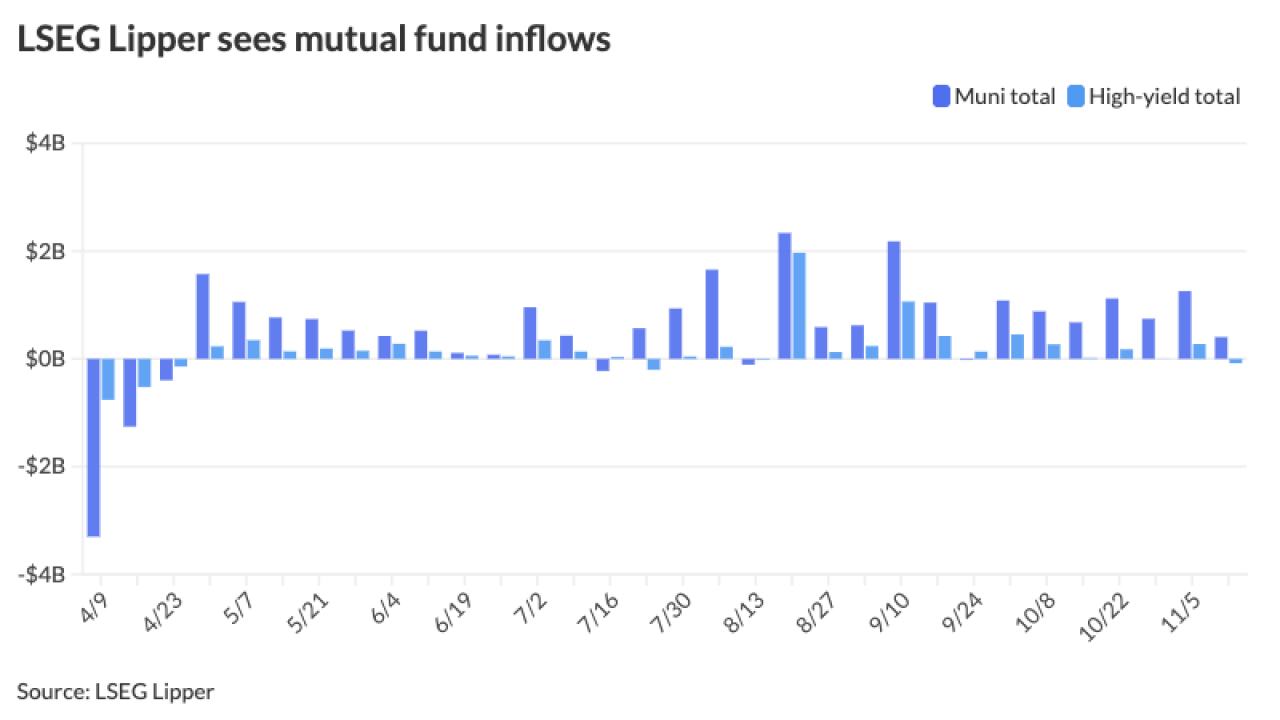SAN FRANCISCO — San Bernardino County, California’s fifth-most populous county, plans to refund $174.4 million of outstanding variable-rate demand obligations after it lost liquidity support for the debt and Moody’s Investors Service put its ratings on negative watch.
Helaba Landesbank Hessen-Thueringen terminated a standby bond purchase agreement for the weekly floaters on Sept. 30 after Standard & Poor’s downgraded the deal’s insurer, MBIA Insurance Corp., to below investment grade.
“We had already begun working on a refunding of those bonds,” said Gary McBride, deputy county administrative officer. “We’ve just adjusted our time line so that we’re working a refunding before the end of December.”
Investors are stuck holding $138.5 million of the certificates of participation, much like investors in auction-rate securities got trapped in those bonds when that market imploded in 2008. Helaba holds $35.9 million of the debt as bank bonds.
The COPs were issued in 1998 to advance refund bonds sold to reconstruct the County Medical Center.
Insured VRDOs have had well-publicized spikes in rates over the past year, as various credit enhancers and liquidity providers suffered downgrades amid a widening financial crisis. However, investors haven’t gotten stuck holding VRDOs because they could put the bonds back to liquidity providers at any time.
McBride says he thinks investors in San Bernardino’s VRDOs knew they faced liquidity risk because Helaba’s right to terminate the SBPA was clearly spelled out in the bond documents and MBIA’s credit woes were well known.
Helaba had the right to terminate its liquidity without notice when MBIA was downgraded Sept. 28. It terminated two days later. The bank’s public finance manager, Patricia South, could not be reached for comment by press time yesterday.
“I think the bulk of the folks who were in these bonds right now were familiar with the situation and were willing to take that risk,” McBride said. “For a while, the rates were fairly volatile, and at one point, nearly all of the bonds were bank bonds.”
Investors are being compensated with much higher than normal rates. Merrill Lynch & Co., the remarketing agent on the COPs, reset the rate on the debt at 6% this week, according to data on the Municipal Securities Rulemaking Board’s Electronic Municipal Market Access system.
That’s 15 times the 0.4% rate in Municipal Market Data’s weekly VRDO benchmark for California.
Both Moody’s and the county agree that San Bernardino can afford to pay those rates until it refinances, but Moody’s is investigating to see if the technical default on the COPs prompts cross defaults on other variable-rate debt. It put the county’s A1 issuer credit rating, A2 pension obligation bonds, and A3 lease-backed ratings on watch for possible downgrade earlier this week.
“Our placing the county’s long-term ratings on watch list reflects uncertainty surrounding the potential implications of this development for the county’s other variable-rate debt outstanding, and attendant liquidity demands, if any,” analyst Dari Barzel said in a report. “In and of itself, the SBPA termination does not appear to have significant negative implications for the county’s liquidity.”
Barzel said in an interview that San Bernardino’s predicament is unusual. It’s the only California county that has been put on negative watch over its variable-rate portfolio.
McBride says the county’s initial investigation has found that the loss of liquidity on the COPs doesn’t affect its other variable-rate debt, but he has asked the county’s lawyers to review the rest of the variable-rate portfolio to be sure. The county has just less than $100 million in other VRDOs outstanding.
McBride says the county is still deciding exactly how to structure its refinancing transaction. It may take the debt out with all fixed-rate COPs or a mix of fixed-rate debt and VRDOs with a letter of credit. If it goes with fixed-rate debt, the county will have to terminate a swap on the existing COPs and could face a termination payment of several million dollars, depending on the shape of the yield curve in December.





